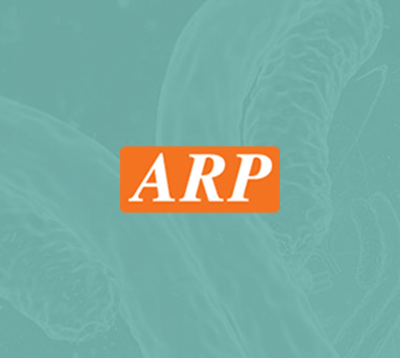| Product Name | Anti-CD34, human Monoclonal Antibody, PE |
|---|---|
| Description | Mouse monoclonal antibody to human CD34 PE conjugate. The CD34 antigen is a 105-120 kDa single transmembrane glycoprotein encoded by a gene located on chromosome 1. It is expressed on most haematopoietic colony forming cells from human bone marrow, including unipotent (BFU-E, CFU-GM, CFU-meg, CFU-Eo, CFU-Osteoclast) and multipotent progenitors (CFU- mix or CFU-GEMM, pre-CFU, CFU-Blast)2-4. CD34 appears to be expressed at the highest levels on the earliest progenitors, and to decrease progressively with maturation. CD34 is a stage-specific, rather than a lineage- specific, leucocyte differentiation antigen. |
| Synonyms | CD34, Hematopoietic progenitor cell antigen CD34 protein |
| Clonality | Monoclonal |
| Clone | BIRMA K3 |
| Immunogen | Immunogen was produced from a mouse hybridoma derived from the fusion of Balb/c spleen cells with X63Ag8.653 myeloma cells. |
| Isotype | Mouse IgG1 kappa light chain |
| Reactivity | Human |
| Applications | FC, IF |
| Form | PE-conjugate, in PBS buffer, pH 7.2 containing 0.1% sodium azide, 1% BSA |
| Storage | 2-8C, do not freeze |
| References | 1. Molgaard HV, Spurr NK, Greaves MF (1989). The hemopoietic skin cell antigen, CD34, is encoded by a gene located on chromosome 1. Leukemia 3:773-6. 2. Civin CI, Trischmann TM, Fackler MJ, Bernstein ID, Bohring HJ, Campos L, et al (1989). M7.1. Report on the CD34 cluster workshop. In: Knapp W et al. eds. Leucocyte Typing IV. White Cell Differentiation Antigens. Oxford-New York-Tokyo: Oxford University Press. 818-25. 3. Civin CI, Strauss LC, Brovall C, Fackler MJ, Schwarts JF, Shaper JH (1984). Antigenic analysis of hematopoiesis. III. A hamatopoietic progenitor cell surface antigen defined by a monoclonal antibody raised against KG-1a cells. J Immunol 133:157-65. 4. Civin CI, Strauss LC, Fackler MJ, Trischmann TM, Wiley JM, Loken MR (1990). Positive stem cell selection - basic science. Prog Clin Biol Res 333:387- 402. 5. Loken MR, Shah VO, Hollander Z, Civin CI (1988). Flow cytometric analysis of normal B lymphoid development. Pathol Immunopathol Res 7:357-70. 6. Merle-Beral H, Cong Duc LN, Lebland V, Boucheix C, Michel A, Chastang C, et al (1989). Diagnostic and prognostic significance of myelomonocytic cell surface antigens in acute myeloid leukaemia. Br J Haematol 73:323-30. 7. Campos L, Guyotat D, Archimbaud E, Devaux Y, Treille D, Larese A, et al (1989). Surface marker expression in adult acute myeloid leukaemia: correlations with initial characteristics, morphology and response to therapy. Br J Haematol 72:161-6. 8. Batinic D, Tindle R, Boban D, Tiefenbach A, Rajic L, Labar B, et al (1989). Expression of haematopoietic progenitor cell-associated antigen BI-3C5/CD34 in leukaemia. Leuk Res 13:83-5. 9. Lai RB, Edison LJ, Chused TM (1988). Fixation and long-term storage of human lymphocytes for surface marker analysis by flow cytometry. Cytometry 9:213-9. 10. Haffkes HG et al, (1996) BIRMA-K3, a new monoclonal antibody for CD34 immunophenotyping and stem and progenitor cell assay. J Hematother. 5 (3):261-70. 11. Kishimoto T. et al, (eds) (1997) Leucocyte Typing VI: Sixth international workshop and conference on human leucocyte differentiation antigens, Japan, 1996 Garland Publishing Inc. 12. Arseniev L. et al, (1999) Comparative evaluation of commonly used clones and fluorochrome conjugates of monoclonal antibodies for CD34 antigen detection. J Hematother Stem Cell Res. 8 (5):547-59. 13. Macey MG et al, (1997) How should CD34+ cells be analysed? A study of three classes of antibody and five leucocyte preparation procedures. J Immunol Methods. 26; 204(2):175-88. 14. Serke S, Huhn D. (1996) Expression of class I, II and III epitopes of the CD34 antigen by normal and leukemic hemopoietic cells. Cytometry. 15; 26(2):154-60 |
| Supplier | ARP |
All Research Products are sold for laboratory RESEARCH USE ONLY and ARE NOT TO BE USED FOR HUMAN OR ANIMAL THERAPEUTIC OR DIAGNOSTIC APPLICATIONS. The information presented is believed to be accurate; however, said information and products are offered without warranty or guarantee since the ultimate conditions of use and the variability of the materials treated are beyond our control. Nothing disclosed herein is to be construed as a recommendation to use our products in violation of any patents. ARP American Research Products, Inc. does not submit its products for regulatory review by any government body or other organization, and we do not validate them for clinical, therapeutic or diagnostic use, or for safety and effectiveness. You are solely responsible for making sure that the way you use the products complies with applicable laws, regulations and governmental policies and for obtaining all necessary approvals, intellectual property rights, licenses and permissions that you may need related to your use. Under no circumstances shall ARP American Research Products, Inc. be liable for damages, whether consequential, compensatory, incidental or special, strict liability or negligence, breach of warranty or any other theory arising out of the use of the products available from ARP American Research Products, Inc. Nothing contained herein warrants that the use of the products will not infringe on the claims of any patents covering the product itself or the use thereof in combination with other products or in the operation of any process. ARP American Research Products, Inc. disclaims any and all representations or warranties of any kind whatsoever, express or implied, including without limitation any implied warranties of merchantability or fitness for a particular purpose, of non-infringement, or regarding results obtained through the use of any product, whether arising from a statute or otherwise in law or from a course of performance, dealing or usage of trade.



